What You Need To Repair Automotive Clear Coat
Much of a vehicle'due south appeal has nothing to do with its functioning and is purely superficial. Although a car's speed and agility on the road is important, information technology ways very fiddling in terms of the total bundle if it is not also attractive in its shape and hue. If you decide to modify its color or repair damage to the exterior after an accident, achieving maximum attractiveness through repainting can be quite costly in a body shop. Consequently, you lot may wish to consider doing the job yourself. Although acrylic paints are the easiest to employ, they show signs of wearable from UV rays and elements quite quickly. So, if you're going to invest the money in automotive paint and your time in applying it, information technology may be a better option in the long run to get with a base coat, or clear coat paint task.
Part i of 3: Preparing your materials
Materials Needed
- Air compressor
- Automotive articulate coat (optional)
- Automotive paint
- Buffer
- Buffing compound
- Catalyzed glazing putty (if needed)
- Clean cloth
- Denatured booze, or other painting prep solvent (optional)
- Electric/orbital sander (optional)
- Face mask
- Masking tape
- Moisture separator filter
- Paper (thick brownish industrial paper)
- Paint gun
- Plastic or newspaper sheets, big
- Primer paint (if needed)
- Sandpaper (ranging from 360- to 3000-grit, depending on impairment to original paint)
- Water
Step 1: Choose your vehicle's future colour. Purchase the pigment and other necessary materials for the job (listed above).
Step 2: Set your workspace. Ideally, information technology should exist both well-ventilated and free of grit or debris. This is because the fumes given off by the preparatory and paint products are harmful if inhaled, and you don't want $.25 of grime making their way onto your wet paint. This means yous should avert outdoor spaces or garages without windows or doors yous can open.
-
While it is about incommunicable to reach a completely grit-free environment in a practice-it-yourself situation, simply do your best to minimize the risk of debris marring your moisture paint. A clean garage with a partially opened door or window is usually sufficient.
-
Tip: Earlier showtime the task, assess the status of your existing paint job to determine the necessary materials and scope of your project. If yous are but irresolute the colour of your paint, which is in expert condition, y'all volition non demand to strip any existing paint or coarse sandpaper to expose the bare metal. If, however, there is damage to the pigment, you will need the fibroid sandpaper, primer paint, and also catalyzed glazing putty to fill in deep scratches or dents.
-
Note: If you need to make such repairs on damaged areas (for example, if just your fender is damaged, just sand that fender down to the metal, fill up in whatsoever damaged areas, and utilize primer to that portion; the rest of the vehicle only needs a light wet sand before applying the base coat).
Role 2 of iii: Preparing your car
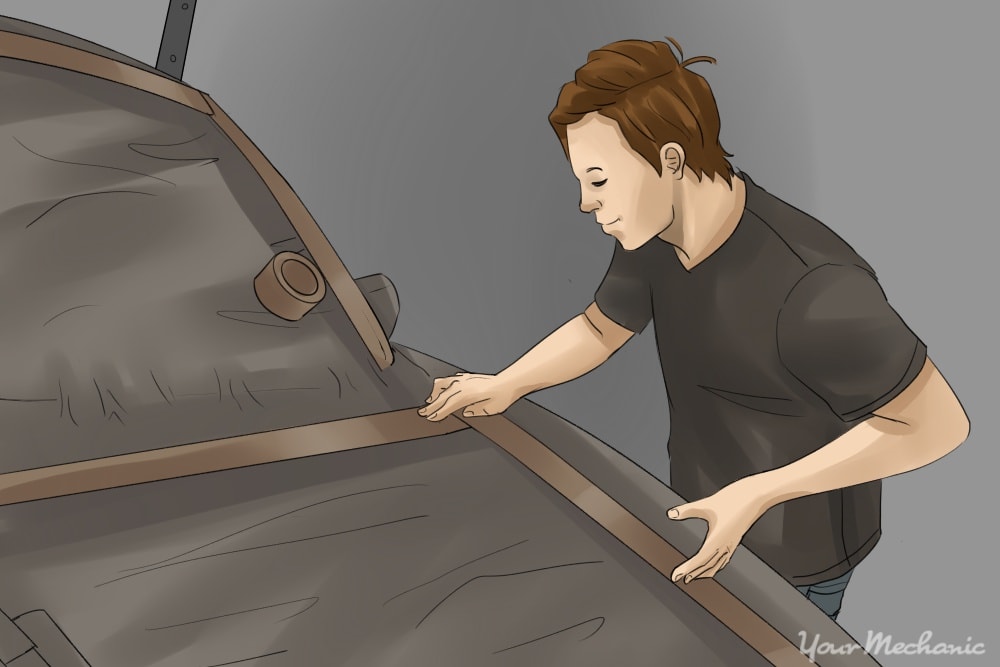
Step 1: Prepare your automobile. Remove any components you don't want painted or cover them with broad sheets of paper or plastic and masking tape.
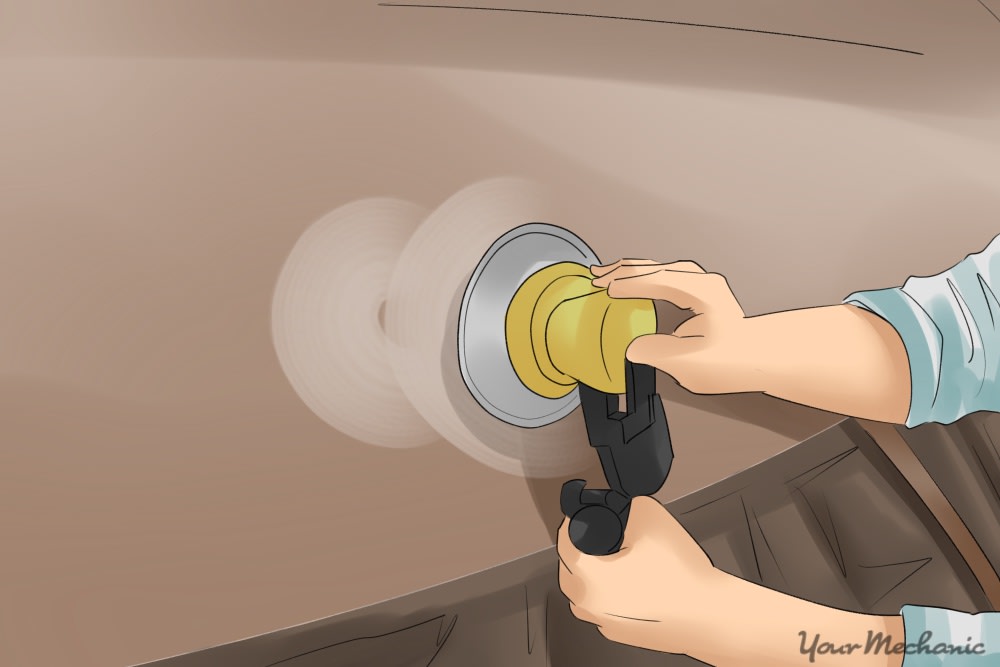
Step 2: Sand the target surface. In damaged regions, set up your exterior surface and strip the existing pigment by sanding with a rough grit (similar 360-grit) paper. Although this can be washed by hand past rubbing in a back-and-forth motion until the bare metal is exposed, the job is far easier when the paper is used with an electric orbital sander.
Stride 3: Fill in any dents. Fill any dents or deep scratches with catalyzed glazing putty. In one case information technology hardens, usually inside a twenty-four hours, sand it polish with the rough grit newspaper.
Part three of 3: Painting your car
- Warning: Wearable a protective face mask when working to foreclose the inhalation of dust and harmful fumes.
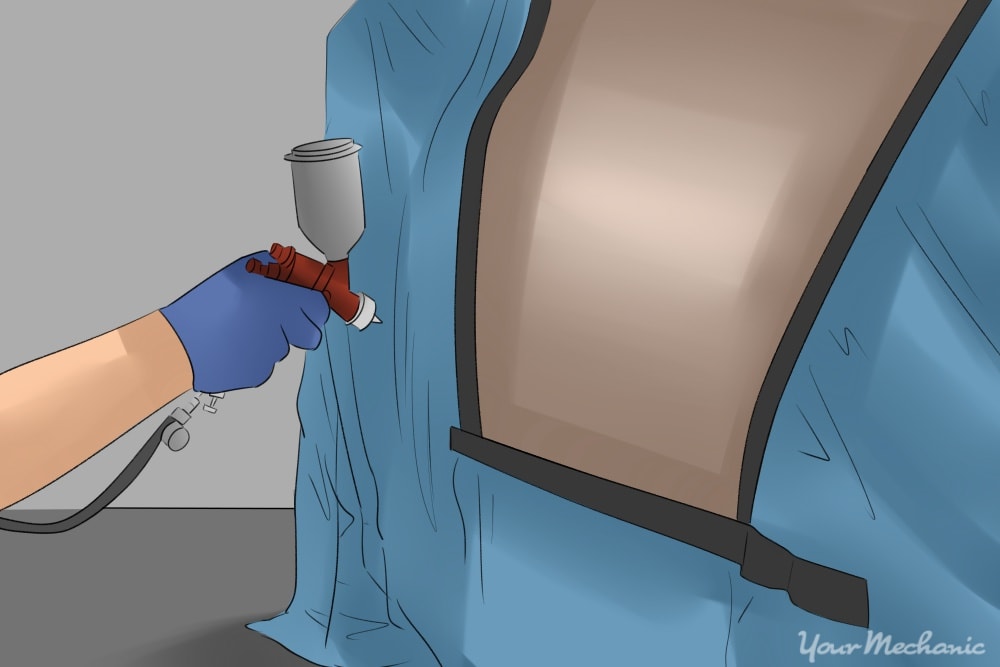
Footstep 1: Use primer. If you repaired paint damage, you must apply a spray primer paint to create a surface to which the base coat tin can adhere. Spray the primer evenly in broad back-and-forth strokes and allow to thoroughly dry (upward to 24 hours) before moving on in the process.
Step two: Moisture sand the target area. Submerge fine grit (around 3000-grit) sandpaper in a bucket of h2o for one to three minutes, and so lightly sand the surface of your existing paint or primer past paw or using an orbital sander. The surface must ever be moisture, so add water or swap out the paper in your h2o bucket as needed.
- If you opt to sand by hand, wrap the paper around a safety block to apply even force per unit area.
Step 3: Dry your vehicle. Ensure there is no moisture on the vehicle'south exterior by cleaning information technology with denatured alcohol, or some other painting prep solvent, and a clean textile.
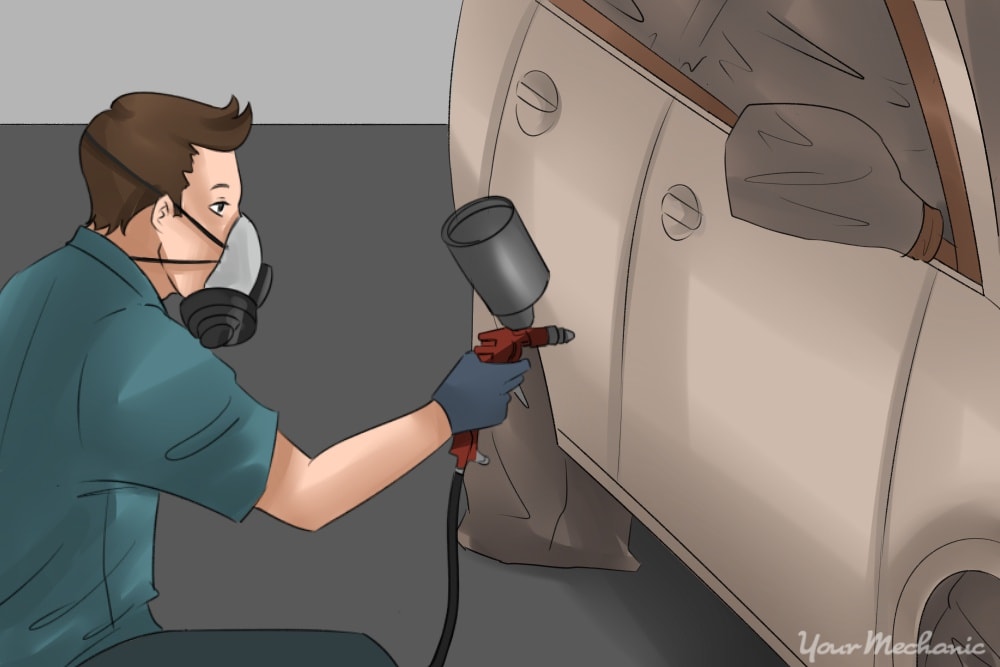
Step 4: Paint the target surface area. Connect the moisture separator filter to the paint gun and the air compressor to the filter, and then fill with the automotive base of operations coat paint of your choice. Spray your vehicle in smooth strokes, overlapping those strokes by about fifty percentage, while holding the sprayer between half-dozen" and 10" from the exterior.
Step 5: Allow paint to dry out. After allowing the base of operations coat to air dry according to your detail paint production's instructions (at least a 24-hour interval), wet sand the surface again.
Stride 6: Make clean and apply clear glaze. Clean the surface with denatured alcohol and a clean cloth another time, then apply the clear coat in the same fashion you did the base of operations coat.
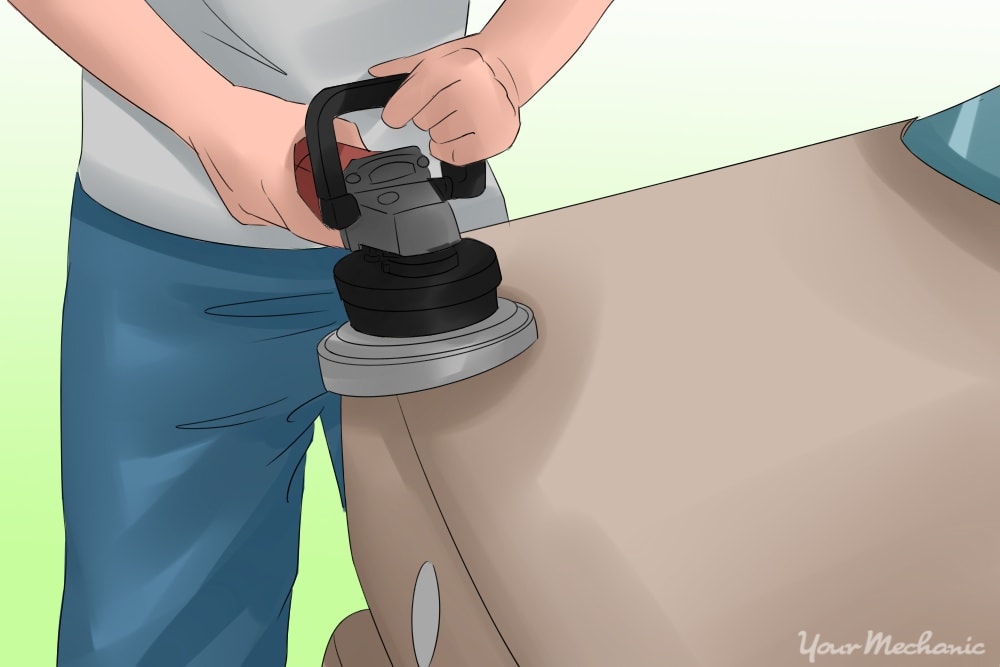
Pace 7: Vitrify your vehicle. Later the clear coat dries according to its instructions (approximately 24 hours), remove all of the record and plastic or paper. Then, vitrify the surface with a buffer and buffing chemical compound in a circular manner to reveal your paint job'southward maximum shine.
-
Tip: Apply two to three coats of base for the all-time coverage, waiting v to x minutes between coats to prevent flash-off, a chemical reaction that results in a hazy appearance.
-
Tip: If you brand a mistake or an area is otherwise damaged during the procedure, y'all can e'er start over in that region with sanding.
While information technology is possible to apply a base coat and/or clear coat of automotive paint on your own, it is a time-consuming process using materials that are relatively expensive, depending on the choice of pigment. Bearing in heed that your time also has value and that there is a potential of a novice painting attempt turning out desperately, it may be in your best interests to enlist a professional's aid.
The statements expressed higher up are but for informational purposes and should be independently verified. Please see our terms of service for more details
Source: https://www.yourmechanic.com/article/how-to-apply-a-clear-base-coat-to-a-car
Posted by: brownfarehe01.blogspot.com


0 Response to "What You Need To Repair Automotive Clear Coat"
Post a Comment